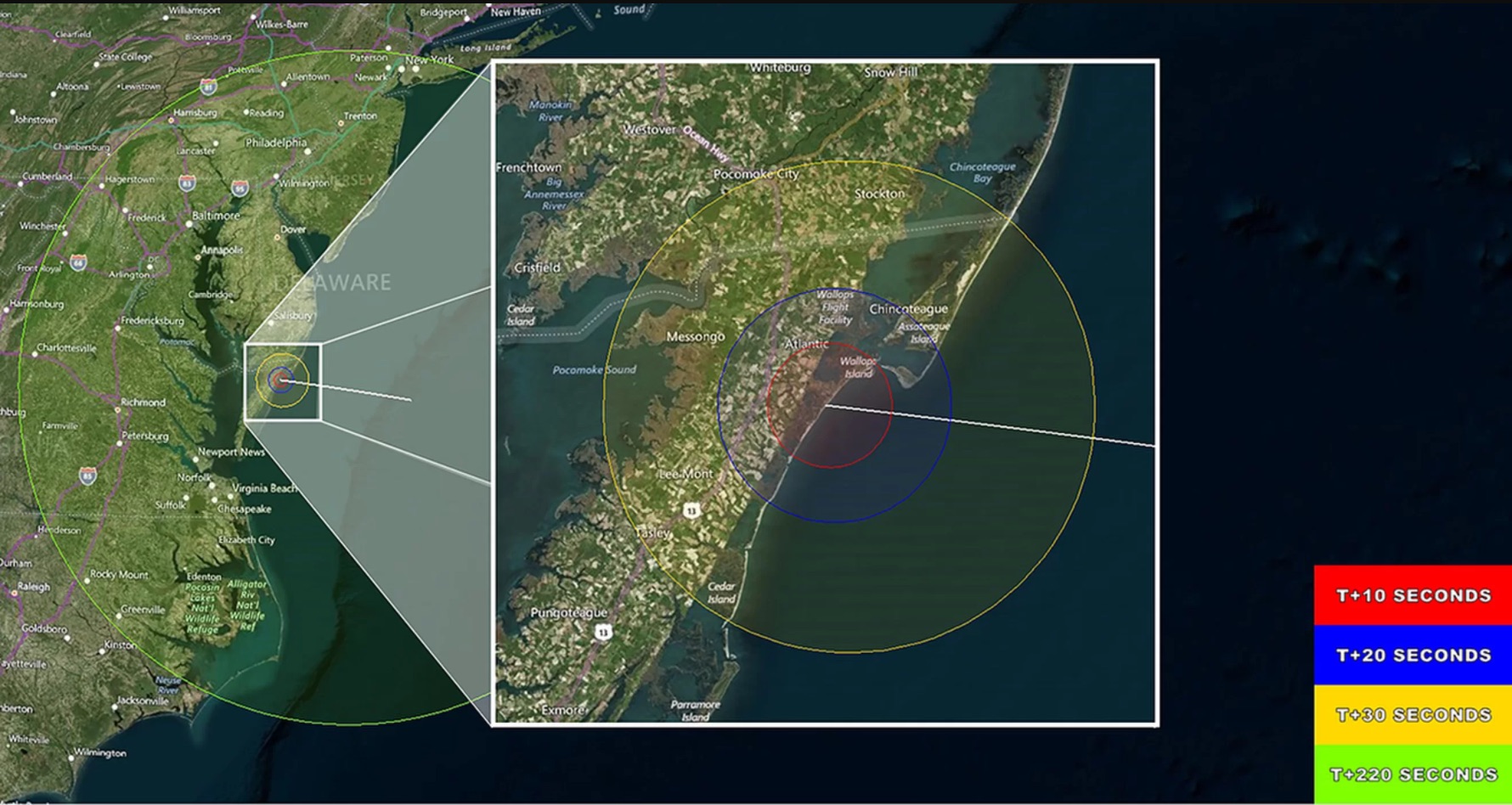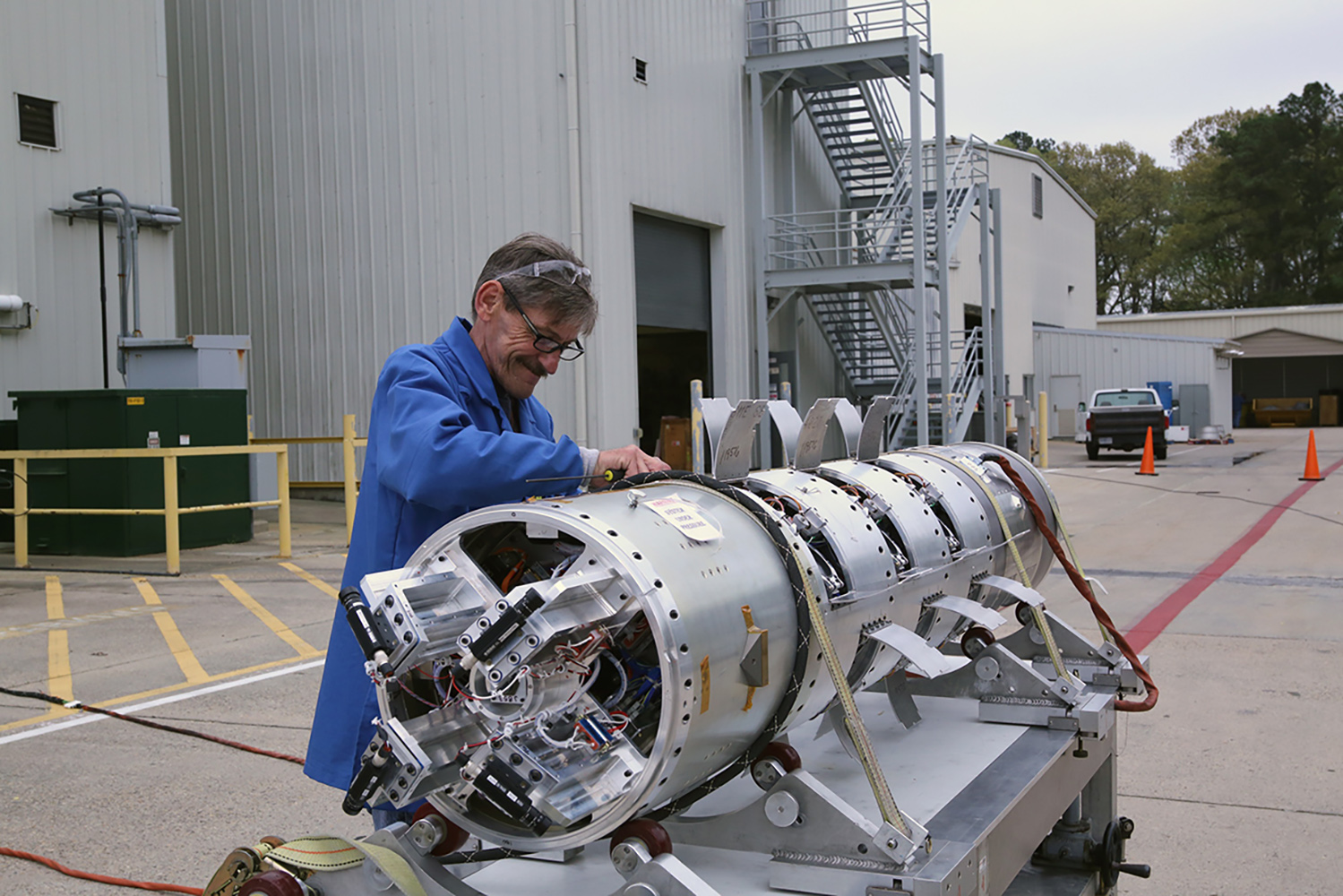Watch a NASA Rocket Create Colorful Artificial Clouds Over US East Coast Tonight!

Update for June 15: NASA's next attempt to launch a small sounding rocket to create glowing clouds in the night sky will occur no earlier than Saturday night (June 17). Liftoff from NASA's Wallops Flight Facility from Wallops Island, Virginia is scheduled for some time between 9:05 p.m. EDT and 9:20 p.m. EDT (0105-0120 GMT).
Original story: A small NASA rocket will launch to create colorful artificial clouds on Sunday night (June 11), and you can watch all the action live. Weather permitting, the launch could be visible to spectators on the U.S. East Coast from New York to North Carolina, NASA officials said.
The two-stage Terrier-Improved Malemute sounding rocket is scheduled to lift off from NASA's Wallops Flight Facility in Virginia between 9:04 p.m. and 9:19 p.m. EDT Sunday (0104 to 0119 GMT on Monday, June 12). You can watch it live here on Space.com, courtesy of NASA; coverage begins at 8:30 p.m. EDT (0030 GMT on Monday).
You can also follow the flight on the Wallops Ustream site: http://www.ustream.tv/channel/nasa-tv-wallops.
About 5 minutes after liftoff, the rocket will deploy 10 soft-drink-size canisters, which will release barium, strontium and cupric-oxide vapor to form blue-green and red artificial clouds.
"These clouds, or vapor tracers, allow scientists on the ground to visually track particle motions in space," NASA officials wrote in a mission update. "The clouds may be visible along the mid-Atlantic coastline from New York to North Carolina."
If you live near the Wallops Island area in Virginia and would like to watch the sounding rocket launch in person, NASA's Wallops Flight Facility Visitors Center will open to the public at 8 p.m. EDT. Because the launch is weather dependent, local spectactors and online viewers can receive the latest updates from NASA via the Wallops center Facebook and Twitter sites.
Get the Space.com Newsletter
Breaking space news, the latest updates on rocket launches, skywatching events and more!

The mission is designed to test a new multicanister ejection system that should allow researchers to gather data over a wider area than has been possible, agency officials added.
The rocket's total flight time will be about 8 minutes. The mission's main payload will hit the Atlantic Ocean about 90 miles (145 kilometers) off the Virginia coast and will not be recovered, NASA officials said.
The mission was originally supposed to lift off late last month, but it has been delayed several times by weather and once by a boat straying into the launch zone.
Editor's note: If you capture an amazing image of the sounding rocket launch or the colorful artificial clouds that you would like to share with Space.com and its news partners for a story or photo gallery, send photos and comments to: spacephotos@space.com.
Follow Mike Wall on Twitter @michaeldwall and Google+. Follow us @Spacedotcom, Facebook or Google+. Originally published on Space.com.
Join our Space Forums to keep talking space on the latest missions, night sky and more! And if you have a news tip, correction or comment, let us know at: community@space.com.

Michael Wall is a Senior Space Writer with Space.com and joined the team in 2010. He primarily covers exoplanets, spaceflight and military space, but has been known to dabble in the space art beat. His book about the search for alien life, "Out There," was published on Nov. 13, 2018. Before becoming a science writer, Michael worked as a herpetologist and wildlife biologist. He has a Ph.D. in evolutionary biology from the University of Sydney, Australia, a bachelor's degree from the University of Arizona, and a graduate certificate in science writing from the University of California, Santa Cruz. To find out what his latest project is, you can follow Michael on Twitter.









